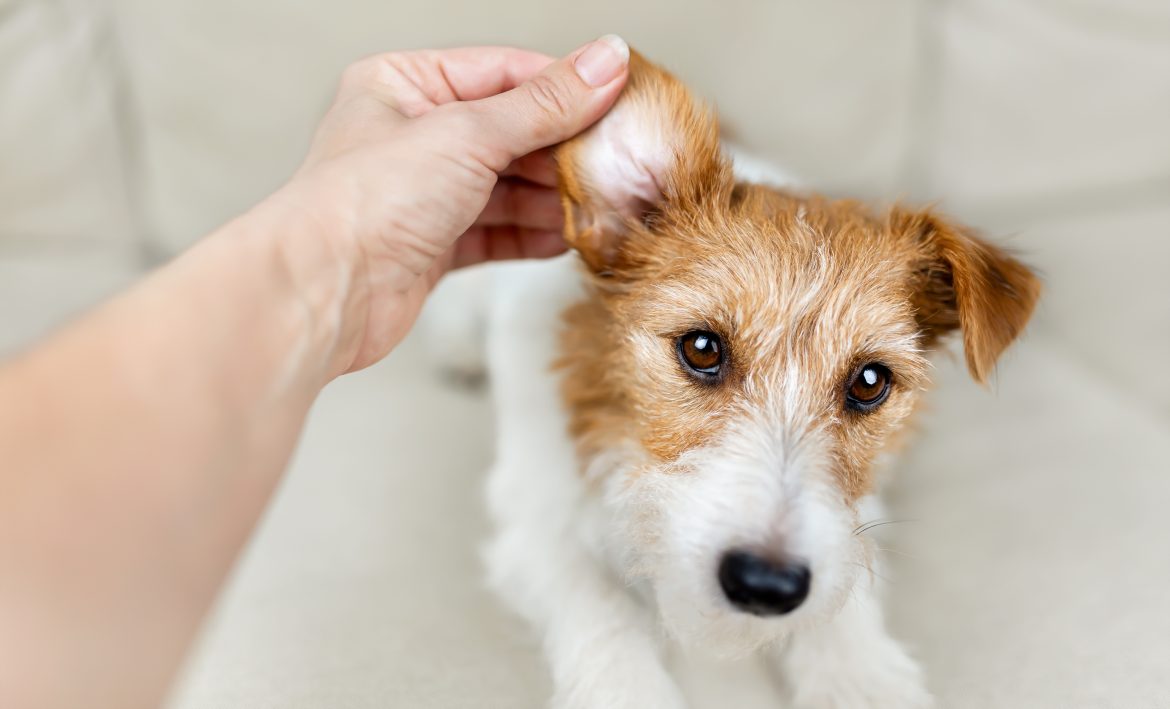We outline 6 quick and easy ways to perform an at-home dog health check. These simple health checks will keep your furry friend in great shape and save you a world of trouble (and money) in the long run.
Why do I need to do regular dog health checks on my pets?
Checking up on your pup is essential. Most of the time, really small issues (such as an eye or ear infection) can be easily treated with some anti-bacterial drops and a tablet or a quick trip to the vet. It’s a different story if these issues go undetected.
You know the saying, “prevention is better than cure”? Well, that applies here too. Any issues that go unnoticed could progress into something more serious and put your dog through a lot more pain if these signs aren’t caught early. That’s why it’s important to go through the 6-step dog health checklist regularly.
1. Seeing eye to eye
Crouch down to eye-level and check that the whites of your dog’s eyes are not bloodshot or a pink-ish colour. This could indicate irritation or infection. There shouldn’t be any swelling or discharge and if your dog is squinting or closing one of its eyes, this may be an indication that your pet is in pain.
If you do spot any of these signs, it’s best to give your vet a call and see if it’s necessary to bring your dog in for an appointment. If the issue is minor, try these helpful home remedies for eye infections.
2. Follow your nose
Now is the time to get up close and personal with your pup and check its nose for signs of dryness and cracks. Hint: a dog’s nose should normally be cold and wet. If there is any scaliness, take your pet to the vet to make sure it isn’t a sign of an underlying issue.
Read this: 5 Fascinating Facts About Your Dog’s Ability to Smell
3. Check out those canines!
Have a thorough look at those teeth and gums. It may be uncomfortable for your pet so try to keep the inspection short and simple. Examine the gums and teeth on a regular basis by raising/lowering the lips to check. Keep an eye out for things like brown tartar buildup, redness along the gums or excessively bad breath.
Any unusual lumps on the gums or under/on the tongue or any places where the teeth roots that are exposed can be very painful for a dog and they may have difficulty eating. If you’re not familiar with the basics of pet dental care, get a mouthful of these terrific tips on how to look after your dog’s teeth at home.
There’s also some great advice for those dogs who won’t take too kindly to that toothbrush. Another great option is to get pet insurance that includes dental work in the cover to help take care of your pup’s perfect smile.
Discover: Gum Problems in Dogs: 4 Issues and What They Mean
4. A change of heart
Noticeable changes in your dog’s normal heartbeat can be a warning sign. It’s a good idea to check this every now and again by gently placing your hands on both sides of your dog’s chest and feeling his heartbeat. Use your watch to measure the beats/minute. His heart rate should be 70-120 bpm and there should be a regular rhythm.
His breathing should be smooth and there shouldn’t be any signs of strain. If there’s anything out of the ordinary, it’s best to chat to your vet about it.
5. Be all ears
Another helpful tip is to look for excessive ear wax or sticky discharge in your pet’s ears. If there is a strange smell or any swelling, monitor it to see if it goes away naturally over time. If not, it’s best to consult your vet.
If your pup is scratching its ears more than normal, that’s also something to pay attention to. It’s also important to clean your dog’s ears from time to time. Using a cotton ball or pad around your index finger, gently wipe away any dirt or discharge from the visible part of your dog’s ear canal and outer ear.
Be sure to get at any of that excessive ear wax. We know it’s not the most enjoyable job in the world (for you or your pup), but it can really help your dog stay healthy and infection-free.
6. Claws and effect
If your pet is in pain it could stop them from being their wonderful, energetic self – so be sure to take a good look at your dog’s paws and claws every now and again. Overgrown nails could grow right around and become embedded in the pad.
This is super painful for a dog and could cause a lot of discomforts. Be sure to give their pads a thorough inspection too. Are they cracked or torn? Is there swelling or redness between the toes? If there is a musty odour, that’s also never a good sign.
Your pup always knows what’s up
A lot of the time our animals actually try to tell us what’s wrong with them and do little things to show us how they feel, but we just don’t notice. Pay attention to any small changes in your pet’s behaviour.
They might be less playful and a lot more subdued. If they stop eating or going outside as much, that could be an indicator that something’s up. You have the best relationship with your pet out of everyone, so you’ll be the most likely to feel if their energy or temperament is off.
Any change in mood or behaviour could be a good sign that you should run through the six-step checklist again and if you spot anything concerning, make an appointment with your vet.
Related: 6 ways to use your phone before you take your pet to the vet
Some positively pawsome tips
If your pet does need to take a pill or some kind of medication to help with any of the issues above, it’s always easier to have some tricks up your sleeve. Dogs will generally have a nibble on anything – from their canine kibble to your left shoe – but there is nothing dogs hate more than taking their medicine.
Why not take a leaf out of the old book of tricks and hide the medicine in some treats or small pieces of food? This should make the daily routine a lot more bearable for both you and your pup.
Making your pet’s health a priority
If you’re tired of all those extra costs hounding you, look no further! Finding the perfect pet insurance doesn’t have to be a hassle or a strain.
When it comes to the pet insurer we trust the most, it has to be Oneplan Pet Insurance! They have a variety of plans to suit all pets and budget, so you can maintain your pet’s health and save on unnecessary costs.
They also pay you BEFORE you see the vet with their unique Oneplan Claim Card and App! And did we mention they let you keep your favourite vet?
So, what are you waiting for? Get your fabulous furry friend the best pet health cover today.
Yours in Not-So-Average Pet Advice,
The Petinsurance.co.za Team



